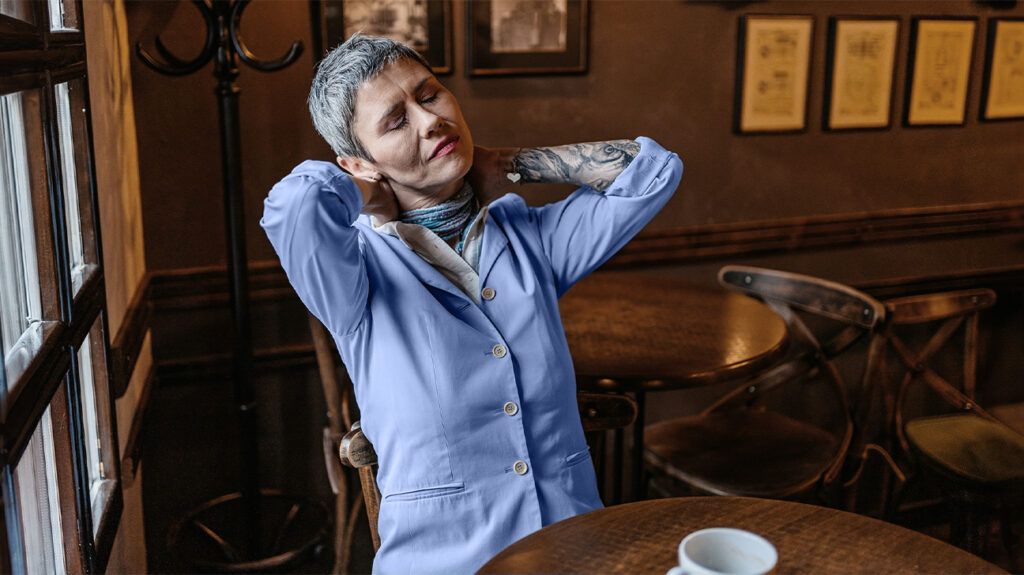Dystonia describes certain irregular muscle movements that occur as a symptom of movement disorders. It can be a symptom of Parkinson’s disease. It may occur as dopamine levels fluctuate.
Parkinson’s disease affects the nervous system, specifically dopamine neurons in the brain.
Some treatments can help manage dystonia in people with Parkinson’s disease.
This article explores the link between dystonia and Parkinson’s disease in more detail.

Dystonia can be a symptom of Parkinson’s disease or occur due to other causes. When someone experiences symptoms of dystonia, their muscles move
It affects everyone differently, and the severity of symptoms ranges from mild to severe. They may also come and go or be more persistent.
The cause of dystonia in Parkinson’s disease is often fluctuations in dopamine levels. Dopamine is a type of neurotransmitter that helps facilitate movement.
Dystonia in Parkinson’s disease often occurs as a side effect of certain medications that doctors prescribe to treat the condition, like levodopa. A 2019 article notes that dystonia commonly occurs in people with Parkinson’s disease following levodopa initiation.
In North America,
Doctors may diagnose someone with primary dystonia when there is no identifiable cause of the symptom.
Dystonia in Parkinson’s disease generally
When dystonia develops early in the course of Parkinson’s disease, doctors may diagnose the condition as rapid-onset dystonia-Parkinsonism.
Genetic mutations cause this type of Parkinson’s disease. A person can either inherit the condition or develop it spontaneously—this could happen after contracting a virus, for example.
A person only needs one copy of an altered gene, ATP1A3, to develop rapid-onset dystonia-Parkinsonism, so there is a 50% likelihood of a parent passing it on to their child.
A
There are
- Focal dystonia: This involves just one body part. For example, a person may have focal dystonia in their neck but nowhere else.
- Segmental dystonia: This affects two parts of the body that are next to each other, such as the head and neck.
- Multifocal dystonia: This affects at least two different parts of the body, and they do not need to be close to one another.
- Generalized dystonia: This affects the entire body or large areas of it, such as the trunk and limbs.
- Hemidystonia: This affects areas on one side of the body, such as an arm or leg.
Symptoms of dystonia
- Arms, hands, and feet: Spasms, twisting, and curling.
- Neck: Head may twist or pull to one side.
- Eye muscles: Blinking too much or unable to open eyes.
- Vocal cords: Voice may change and sound soft, hoarse, or breathy.
- Jaw: Face contorts and twists; the mouth may also open or shut forcefully.
- Abdominal wall: Involuntary spasms of the torso.
- Back: Arching and writhing.
Aside from Parkinson’s disease, dystonia has
Medications and stimulant substances
Medications that may cause dystonia as a side effect include:
The following stimulants are also associated with dystonia:
- caffeine
- cocaine
- amphetamines, doctors sometimes prescribe these to treat certain conditions, like attention deficit hyperactivity disorder (ADHD)
Basal ganglia damage
The basal ganglia is a part of the brain that helps control movement and other important processes, such as decision making and reward. Damage to this area and diseases that may affect it can include:
- head injury
- stroke
- tumor
- oxygen deprivation
- infection, for example, encephalitis
- carbon monoxide or heavy metal poisoning
- multiple sclerosis
- cerebral palsy
The type of dystonia treatment a person receives depends on their symptoms and the cause of the dystonia. To treat muscle spasms and cramps associated with dystonia, treatments include drugs that regulate neurotransmitter levels, physical therapy, botox injections, and surgery.
Medications that regulate different neurotransmitters
- dopaminergic agents
- anticholinergics
- gamma-aminobutyric acid (GABA) agonists
Physical therapy can help people manage focal or segmental dystonic movements.
Botox paralyzes the muscle to stop it from contracting.
Surgery can be an option for some types of medication-resistant dystonia. Surgery for dystonia treatment may involve creating a lesion in an area of the brain or implantation of a specialized type of electrical stimulator. Presurgical testing is necessary to determine whether surgery could be effective.
Dystonia and Parkinson’s disease can occur together. In people with Parkinson’s disease, fluctuations in dopamine can cause muscles to contract and spasm.
The symptoms a person experiences depend on the type of dystonia they have.
Treatments for dystonia include medications, botox injections, and surgery. A person could speak with a doctor to find out which treatments may work best for them.
